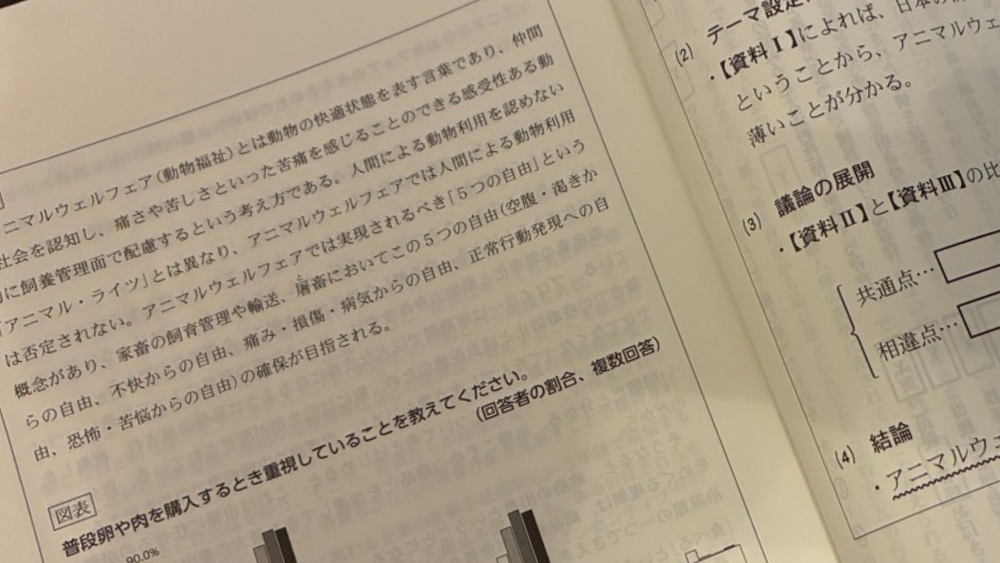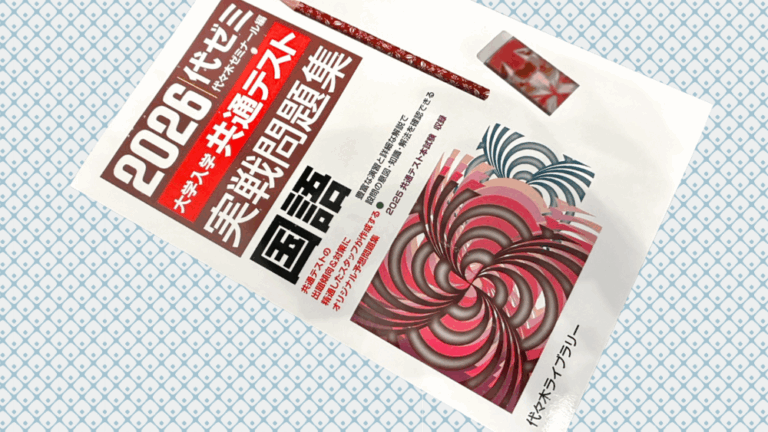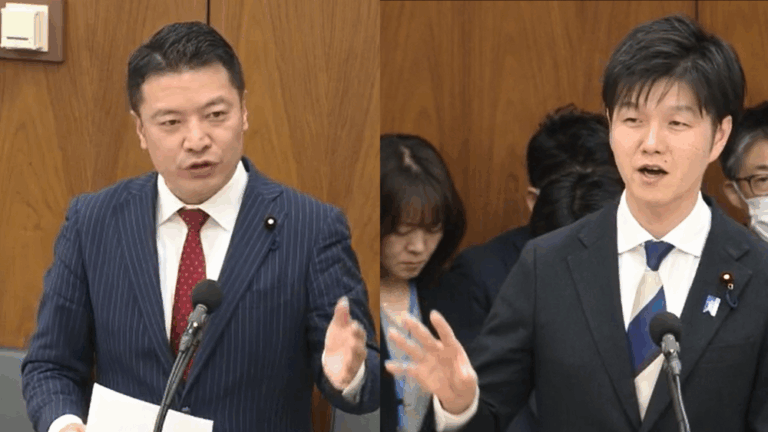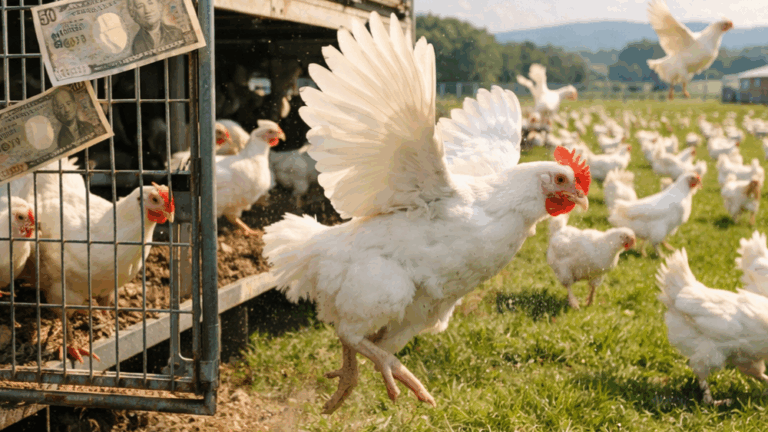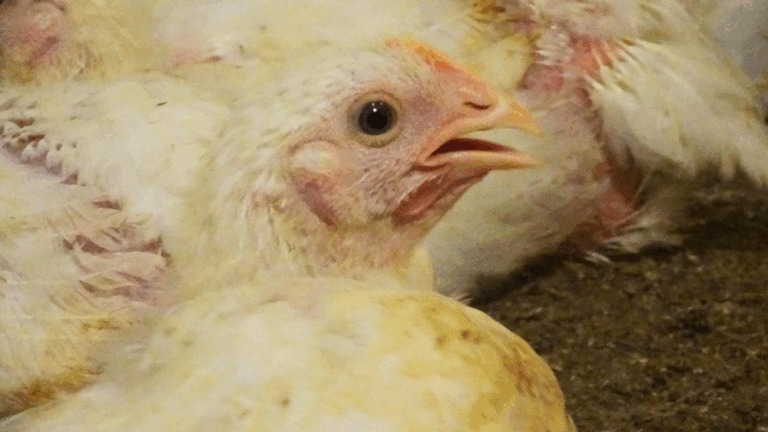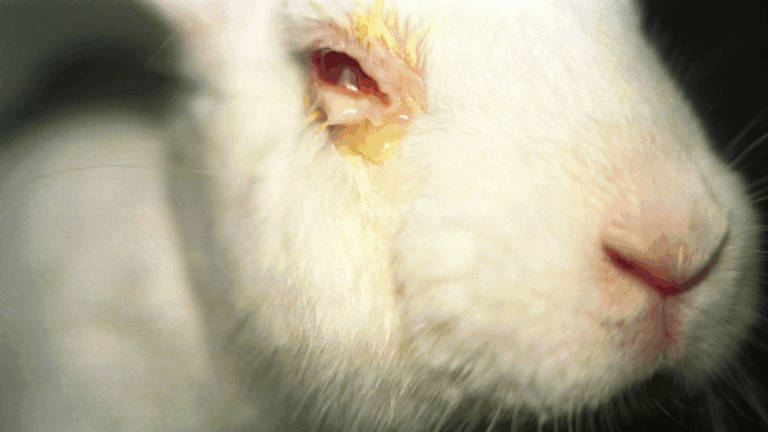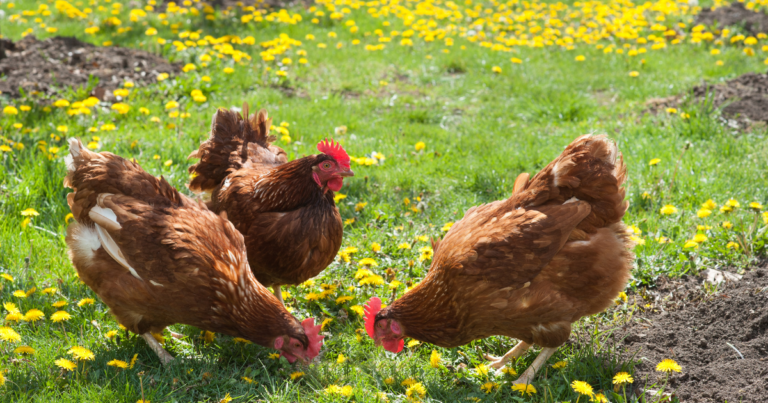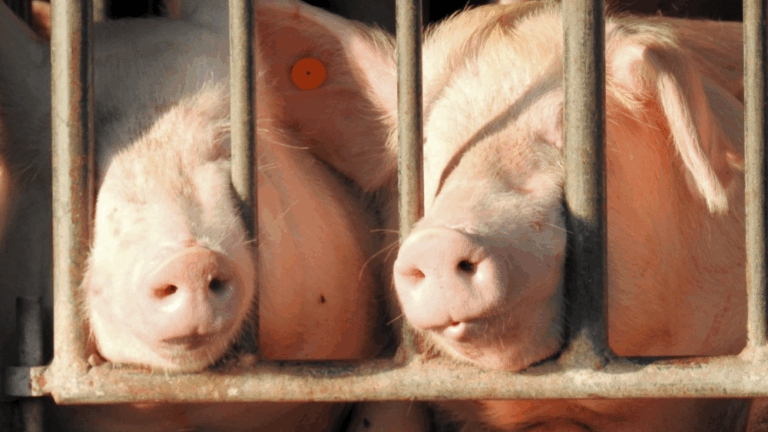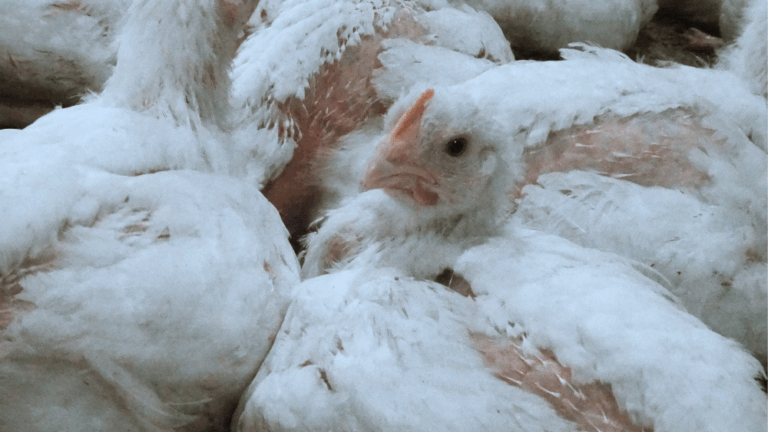A new format question on the subject of animal welfare is now available in the “2026 Practice Test for the Common University Entrance Test: Japanese,” a practice test for the Common University Entrance Test prep school.
Advisor- (Professor Emeritus, Japan Women’s University) Koichi Hosokawa
Last year, the department of Daikoku Seminar that prepares mock tests for the Common University Entrance Examination offered me their consent to use some of my works in preparing questions for the exam. I agreed, saying that it was a Japanese question in which I would present materials on animal welfare and ask the author’s thoughts therein.
I have not been contacted as to how my text was used and the issue, but this year I agreed to publish that mock exam question as a book of questions, and a booklet was sent to me.
The practice test is in the same format as the actual common test and is designed based on the purpose and trends of the questions. There will be five major questions: three on modern literature, one on ancient literature, and one on Chinese literature. There is a small gate in the middle of them, for a total of 40 questions. The question on animal welfare is the third major question, a contemporary text, in which there are four subquestions (actual questions to be answered), and the following three materials are presented.
Source 1: Excerpted from Mitsubishi UFJ Research and Consulting, “International Comparison on Intention to Purchase Food Products with Consideration for Animal Welfare and Human Rights” (July 11, 2023).
Document 2: Sonoe Shigeta, “Animal Welfare: Commodification of Life, We Should Face It,” excerpt from “Asahi Shimbun DIGITAL” (February 16, 2023).
Document 3: Koichi Hosokawa, “Thinking about Animal Welfare: ‘Responsibility of Those Who Consume Life’ Begins to be Questioned,” excerpt from an article in Yokendo, Agriculture and Horticulture, Vol. 97, No. 5 (May 2022).
Document 3 is a poorly written paper, but this is in the form of an article published in an agricultural journal, which I believe the mock exam creator has done a good job of finding. After presenting these as materials, assuming that a fictitious student named Mr. S made a “composition memo” for his report on the theme of “Animal Welfare and Us” by referring to the materials, it will be presented and the students will be asked why they are writing a report on this theme (the trigger leading to the setting of the theme) (sub (Question 1), the development of the argument (similarities and differences between the materials) (Sub-questions 2 and 3), and the significance of thinking about animal welfare in the conclusion (Sub-question 4), the student is to select one correct answer from 4-5 answer choices.
I was surprised and pleased that Animal Fair was chosen as a mock exam question, as I was impressed that the method of questioning is much different than in the past.
The Common University Entrance Test is designed to “determine the level of achievement in basic studies at the upper secondary school level and to grasp the abilities necessary to receive a university education. The test focuses on questions that require students to demonstrate their ability to think, make judgments, and express themselves by using knowledge and skills, as well as questions that test the quality of their knowledge with deep understanding, which is expected to be cultivated through “independent, interactive, and deep learning” in upper secondary schools. In doing so, it is also noted that language ability, ability to use information, and ability to find and solve problems are to be cultivated across subjects, etc.” (according to the Center for University Entrance Examinations’ “Policy for Creating Questions for the Common University Entrance Test”).
In addition, “In order to appropriately evaluate knowledge and skills, as well as the ability to think, judge, and express oneself, the test will emphasize the process of learning according to the characteristics of the subject matter, and will devise the structure of questions and the setting of situations. For example, the questions should effectively incorporate situations in which students discover issues in society and everyday life and conceive solutions, and situations in which they consider issues based on materials and data, etc.”.
When I am in contact with university students, I realize that they are the SDGs generation, although recently I have been calling them Generation Z. I think that many of them are sensitive and kind-hearted young people. It seems that many young people are highly sensitive and have a kind heart. However, there seem to be fewer “consumers who take action,” perhaps due to the Corona disaster. I hope that many high school students will take this mock test and think about animal welfare and animal protection during their college life and after graduation, and that they will take action. I hope that this will be the time when the real common university entrance examinations will include related themes.
Book with this issue: “Yoyogi Seminar, ed. 2026 Practical Exercises for the 2006 Common University Entrance Examination Japanese” (Edited by Yoyogi Seminar, Published by Japan Center for Entrance Examinations, List Price 990 yen (including tax), published by Japan Center for Entrance Examinations, Inc. Japanese (edited by Yoyogi Seminar, published by Japan Center for Entrance Examinations, Inc,) 2025 Year 2025 July July 20 (First published July 20, 2025)
